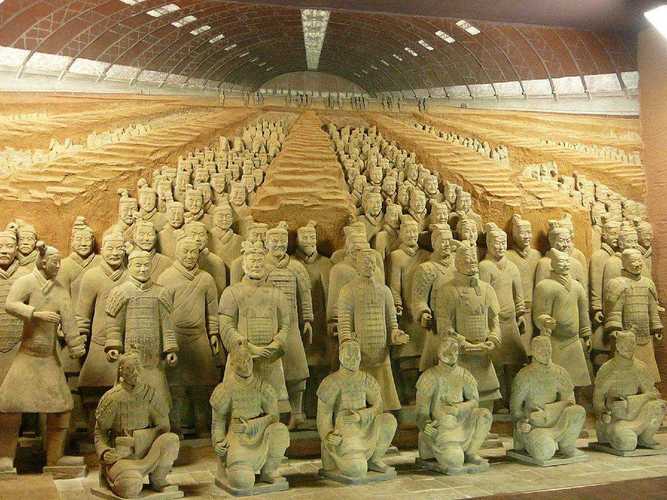
Are the Terracotta Warriors Real?
The Terracotta Army, discovered in 1974 by farmers digging a well near Xi'an, China, is a sight to behold. Thousands of life-sized warriors, each unique in appearance, stand guard over the tomb of Emperor Qin Shi Huang, the first emperor of a unified China. But a question often arises: are these astonishing figures truly modeled after real people, or are they products of artistic imagination?
Evidence Pointing to Real-Life Inspiration
Overwhelming evidence suggests that the Terracotta Warriors were indeed crafted from real portraits, intended to be an eternal representation of Qin Shi Huang's real army.
Individualized Features:
Each warrior boasts a unique combination of facial features, hairstyles, and expressions. No two warriors are exactly alike, suggesting they were not mass-produced from a single mold but individually sculpted with distinct characteristics. This level of detail strongly indicates that the artists drew inspiration from real individuals.
Rank and Attire Variations:
The warriors exhibit a hierarchy reflected in their attire, weaponry, and even facial expressions. High-ranking officers, for instance, wear elaborate armor and sport stern demeanors, while foot soldiers appear younger and less adorned. This meticulous attention to military structure and rank further supports the theory that the army was modeled after a real-life counterpart.
Anatomical Accuracy:
Anatomically, the warriors exhibit a high degree of realism. The musculature, proportions, and even subtle details like veins and fingernails are rendered with impressive accuracy. This anatomical fidelity points to the artists' keen observation of the human form, suggesting they based their work on real-life subjects.
Scientific Analysis Supports Authenticity
Scientific analysis further strengthens the claim that the Terracotta Warriors are based on real people.
Clay Composition:
Studies on the clay used to create the warriors reveal that it originated from the local area around the mausoleum. This finding suggests the use of local craftspeople and resources, increasing the likelihood that the warriors were modeled after people from the region.
DNA and Skeletal Analysis:
While full DNA analysis has yet to be conducted, initial studies of skeletal features, particularly skulls, have shown that the warriors possess physical characteristics consistent with the Han Chinese population of the Qin Dynasty era.
Conclusion: A Reflection of a Real Army
The evidence overwhelmingly points to the Terracotta Army being much more than a collection of generic sculptures. The individualized features, hierarchical accuracy, anatomical precision, and supporting scientific analysis all converge on a single, compelling conclusion: the Terracotta Warriors are representations of real people, meticulously crafted to accompany and protect their emperor in the afterlife.
Q&A
Q: Were any of the Terracotta Warriors found fully intact?
A: No, unfortunately, most of the warriors were found collapsed and fragmented due to the passage of time, fires, and the collapse of their burial pits. However, archaeologists have done remarkable work painstakingly piecing them back together.
Q: Are there any female warriors among the Terracotta Army?
A: While the vast majority of figures unearthed so far are male warriors, there is ongoing debate about the possible presence of female warriors. Some experts believe that certain figures, characterized by their less prominent features and attire, may represent women who held roles within the Qin army.
Q: Is it true that each Terracotta Warrior has a unique face?
A: While it's impossible to examine every single fragment, evidence suggests that the artists went to great lengths to give each warrior a unique appearance. They achieved this through variations in facial features, hairstyles, expressions, and even subtle details like wrinkles and facial hair.